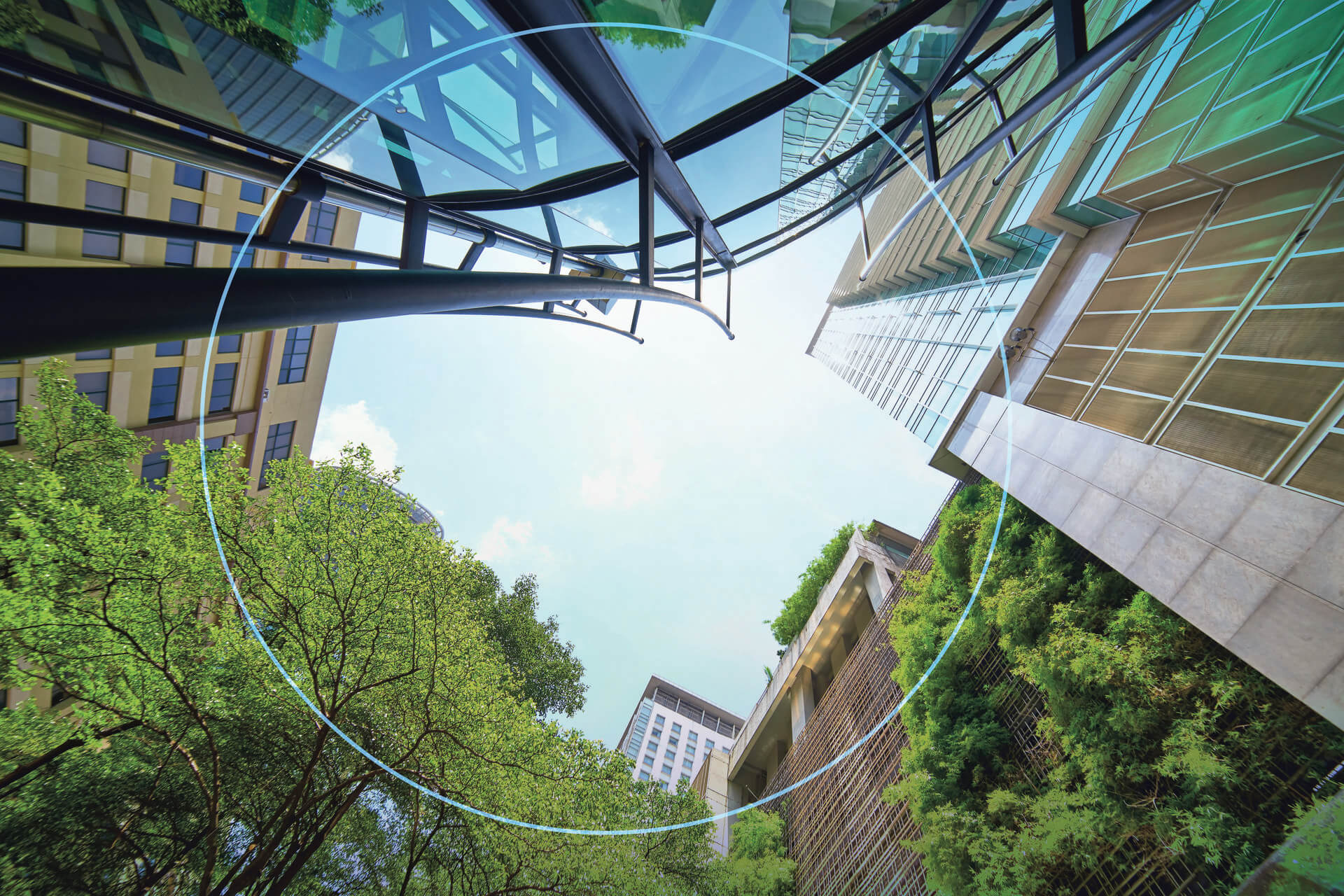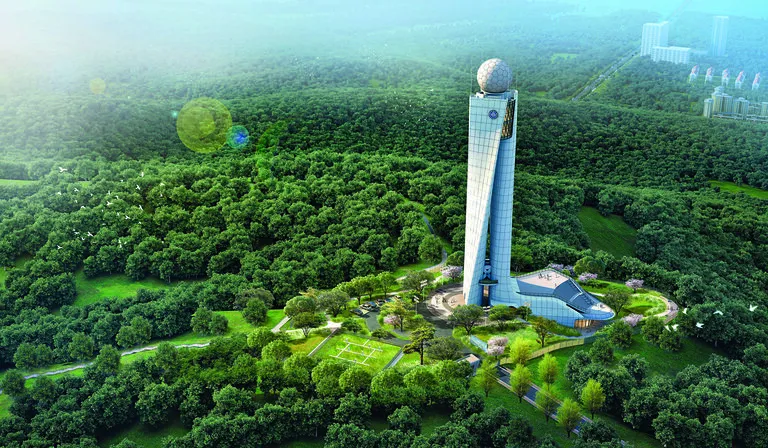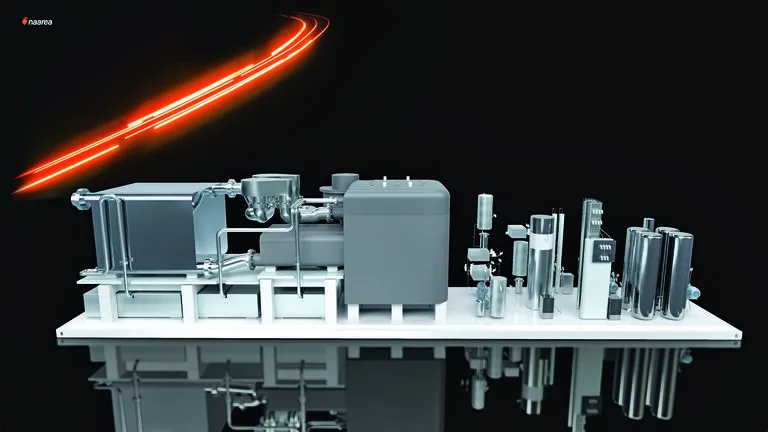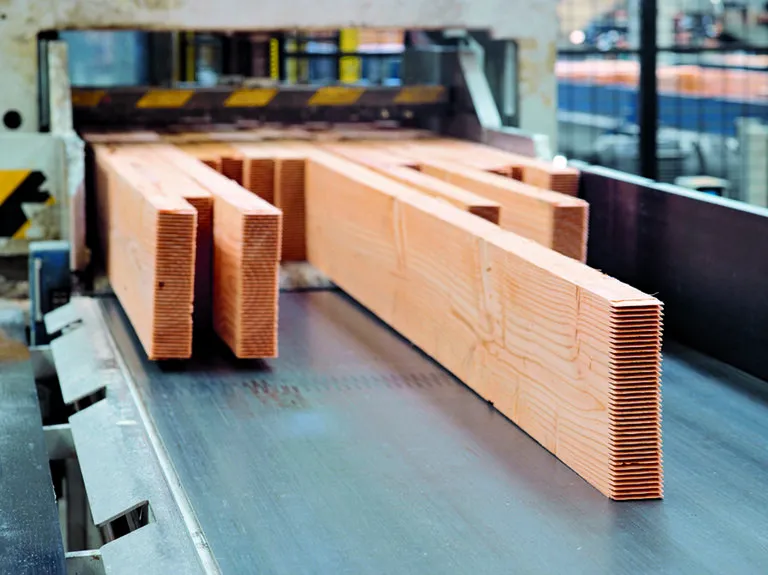Revolutionizing Construction: Integrated Virtual Twins & Sustainable Energy Solutions
The 3DEXPERIENCE platform is accelerating the construction industry’s transformation to scalable, sustainable approaches
UNTiL NOW
Construction was energy-intensive, and environmental concerns were often addressed late in development or upon the completion of a project
FROM NOW ON
Integrated virtual twins enable innovators to imagine alternatives to fossil energies such as nuclear, hydrogen or biofuels as well as to accelerate the construction industry’s transformation to scalable, sustainable approaches
We’re witnessing an exciting transition toward greener infrastructures and cities – marked by low-carbon energy, smart and connected buildings and sustainably designed materials. The way we live, work and relax in cities will be transformed. Virtual modeling is at the heart of this revolution, allowing for new ideas to be designed and tested within virtual twins before they are put into practice.
The 3DEXPERIENCE platform brings virtual ideas to life, from a next generation meteorological tower in China, to micro nuclear power plants the size of a bus delivering carbon-free energy to industries or remote communities, to renewal of wood construction supported by digitalized processes in the lumber industry. Imagining all aspects of construction projects in the virtual world marks a huge departure from fragmented approach of the past, for the benefit of all stakeholders.
Paving the way for smart construction
Chinese construction company CSADI used the 3DEXPERIENCE platform for project management of a sophisticated new meteorological tower, achieving record-breaking efficiency and safety while paving the way for wider adoption of integrated, smart construction.
Twisting skyward in a double spiral, the outer façade of the Wuhan Next Generation Meteorological Radar tower suggests a cyclone, one of the weather disasters it was built to monitor. It was designed and developed by China’s Central-South Architectural Design Institute (CSADI), and the 3DEXPERIENCE platform expedited the process by embedding engineering and construction know-how at the tower’s concept phase, reducing costs, accelerating schedules and improving worker safety.
Working in the 3DEXPERIENCE platform allowed CSADI to determine the perfect rotational angle of the building and accurately calculate the shape and dimension of more than 1,000 glass-fiber reinforced concrete exterior wall panels. Designing and building first in the virtual world represented a departure from the fragmented project management approach that CSADI had used in the past. With its complex shape, the tower was the ideal pilot project to test the capabilities of a new smart, connected construction vision.
Having a virtual twin of the tower made possible real-time collaboration with multiple stakeholders at the construction site, covering all disciplines: structure, water, heating, electricity, geotechnical engineering and more. Thanks to a highly detailed dashboard, information was seamlessly shared across the value chain within a single environment, ensuring that everyone’s requirements were taken into account and applying data-driven insights to anticipate risks.
Leveraging simulation allowed CSADI to test and verify all aspects of the project before construction, helping to ensure that all work orders were clear to enhance worker efficiency and safety. For example, CSADI simulated hoisting the façade components in the installation sequence running various scenarios, including the location of suspended platforms, obstructions and wind calculations, helping to determine the ideal conditions for workers to safely install the façade.
The 3DEXPERIENCE platform gave CSADI a single data source for design, construction, operations and maintenance; this information is now part of a template library that the company will use to get new projects off the ground faster and to develop industry standards for smart construction.
VIRTUAL TWIN EXPERIENCE HELPED CSADI ACHIEVE
- 60%
FEWER CONSTRUCTION ERRORS
- 30%
TIME REDUCTION ON THE OVERALL CONSTRUCTION SCHEDULE
Delivering decentralized, stable, low-carbon energy
Micro nuclear power plants the size of a bus may offer a solution to sustainably bring low carbon energy to industry, especially in remote areas. Virtual twins are helping to accelerate their development.
Given the pressing need to cut carbon emissions to limit the effects of climate change, energy production sources must shift toward low carbon solutions, which provide cleaner and more reliable energy.
French startup NAAREA has come up with a revolutionary way to do just that. Its solution consists of delivering carbon-free energy directly to industrial companies through micro nuclear power plants. The company is developing XAMR®(1), a fast neutron and molten salt micro reactor that also embraces circular economy principles by using long-lived actinides coming from the reprocessing of nuclear spent fuel to produce both electricity and high-temperature heat without releasing any greenhouse gases. Each XAMR® reactor will be about the size of a bus, allowing it to be placed on sites without an external grid supply – perfect for delivering clean energy in remote areas.
Accelerating conception to manufacturing
To implement this pioneering energy solution, in just eighteen months NAAREA created a fully functional virtual twin of XAMR® on the 3DEXPERIENCE platform on the cloud. Having an integrated virtual environment makes it possible to manage all design, engineering and manufacturing processes from anywhere. Engineers can securely collaborate on a shared virtual twin to validate the architecture, size and functionality of the reactor on multiple dimensions including operational and safety requirements, dynamic behavior and functional analysis, 2D schemas and 3D digital mockup.
“We want to be on the market by 2030, so we need to move fast,” said Jean-Luc Alexandre, CEO of NAAREA. “The best solution to achieve our goal is the virtual twin. It’s a fantastic accelerator. One of the best features is that we can design and simulate as we go, so we can test our ideas and see if they’re worth progressing.
Detecting discrepancies earlier
The result is a gain of time for NAAREA, and the ability to scale as the company’s business needs evolve. The virtual twin is also critical for getting XAMR® certified with regional and international safety authorities.
NAAREA is now running laboratory tests and feeding data from its experiments into XAMR®’s virtual twin to test its safety features and analyze its operational performance ahead of physical prototype production. “All our test data, simulation results and design modifications are logged in the virtual twin; this traceability is key for the safety authorities and helps us be sure that we can manage any changes and detect any discrepancies in the configuration management,” Alexandre said.
“We’re excited about how the virtual twin can be used as part of the regulatory process to demonstrate the reactor’s safety.”
Reshaping construction with sustainable approaches
Virtual twins are being used to make buildings more energy efficient and with a smaller carbon footprint. From creating the conditions for comfortable indoor temperatures to producing environmentally friendly wood, digital solutions are reshaping the construction industry.
SOLIDEO: Simulating heat flows to guarantee comfort for athletes
Q&A with Antoine du Souich: Director of strategy and innovation, SOLIDEO: Société de livraison des ouvrages olympiques (French for “Olympic Delivery Authority”), the French public body responsible for long-term infrastructures and facilities, being built for the summer 2024 events
Summers in Paris are getting hotter. What does this mean for athletes?
It’s important that we ensure that athlete’s accommodations are cool and comfortable, so that they can rest and recover after competitions. To accomplish this we first needed to understand how the buildings would perform under extreme heat.
How did Dassault Systèmes help?
We collaborated through the use of SIMULIA to create a 3D model of an upper floor of one of the athlete residences. From there, parameters such as insulation, ventilation, solar shades and an ecological system to cool floors were simulated under different temperatures. The objective was to avoid needing to use air conditioning while maintaining an indoor temperature of at least 6 °C below the outdoor temperature.
We now have the key insights we need to optimize comfort inside the buildings – even if the outside temperatures soar this summer or later when the buildings are repurposed for future residents. We can identify and implement any additional energy solutions needed to keep the buildings cool, all while limiting impacts on the environment. Beyond guaranteeing healthy conditions for residents, we can apply these learnings about how heat performs inside other buildings, such as hospitals, creating safer situations and a higher quality of life for everyone.
PIVETEAUBOIS: Transitioning to sustainable wood manufacturing
Prefabricated timber is growing in appeal as an alternative building material to carbon intensive concrete and steel. Cross-laminated timber (CLT), a sustainable multi-layered wood panel, is showing architectural potential for making strong large scale walls. Since CLT requires being 100% made-to-order, when French industrial timber product manufacturer PiveteauBois decided to meet customer demand for this material they needed to transform their entire manufacturing approach to gain the agility needed.
PiveteauBois adopted the 3DEXPERIENCE platform to create a single 3D model for breaking down customer building models. This model could then be used to produce each individual timber part, as well as to optimize how they would be loaded onto the delivery trucks, reducing the carbon footprint of operations. Thanks to the platform’s robust data and automation capabilities, PiveteauBois gained 50% to 60% in productivity. They can respond quicker to change in customer needs, delivering finished products faster. Collaborating on the cloud ensures product traceability and better internal communication. PiveteauBois plans to further use the platform to meet sustainability goals, calculating the lifecycle and carbon footprint of its products.




